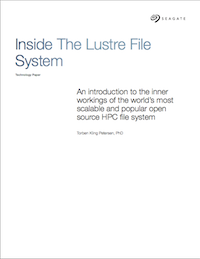SANTA CLARA, Calif., — Nov. 14, 2023 — Today, AMD said its microprocessors now power 140 supercomputers on the latest Top500 list, representing a 39 percent year-over-year increase. Additionally, AMD powers 80 percent of the top 10 most energy efficient supercomputers in the world based on the latest Green500 list.
“AMD technology continues to be at the forefront of solving the world’s most important challenges. Our partnerships with national labs and research facilities around the world accelerate scientific discoveries, while driving new levels of understanding for critical items like health, energy, physics and more,” said Forrest Norrod, executive vice president and general manager, Data Center Solutions Group, AMD. “Working together with the industry, we are helping to establish and drive new paradigms of performance and energy efficiency, while empowering scientists and researchers of the world to advance the groundbreaking work that seeks to answer humanity’s toughest questions.”
The Frontier supercomputer at Oak Ridge National Laboratory, powered by AMD EPYC processors and Instinct accelerators, remains the fastest computer in the world – for the fourth list in a row. Providing an impressive blend of the best performance and leading energy efficiency, Frontier continues to drive impactful science through its first full year of user operations. The latest scientific projects on Frontier include new research on power grid optimization, new designs on airplane engines for better efficiency and capabilities as well as two out of six finalists for the Gordon Bell award.
The second exascale class supercomputer powered by AMD, El Capitan, has started its installation process at Lawrence Livermore National Laboratory. The system will be powered by the forthcoming AMD Instinct MI300A APU, which is the first data center APU to combine CPU and GPU cores and high-bandwidth memory, all in a single package. This innovative design is anticipated to provide dramatic increases in both energy efficiency and performance. When it comes online, El Capitan is expected to exceed two exaflops of double precision performance, becoming the second AMD powered supercomputer to surpass the exaflop barrier.
“We are making excellent progress on the installation of El Capitan, which will clearly be one of the world’s best computing systems,” said Bronis R. de Supinski, the Chief Technology Officer for Livermore Computing at Lawrence Livermore National Laboratory. “This enormous undertaking of multiple partners is creating a system that will enable our scientists to achieve results which they previously could only dream about. El Capitan will offer incredible programmability, performance and energy efficiency through its use of the AMD Instinct MI300A APUs that eliminate the challenges of repeatedly moving data between CPUs and GPUs, thus helping us achieve our mission.”
Enabling More Energy Efficient Computing In HPC, energy efficiency is a top priority for the industry to meet sustainability commitments and deliver performance to enable the next generation of supercomputers. AMD is setting a new pace of innovation to accelerate energy efficiency through its 30×25 goal, which aims to deliver a 30x energy efficiency improvement in processors and accelerators for AI-training and HPC by 2025i, from a 2020 baseline, through a holistic approach to chip design and system-level improvementsii.
Showcasing the impact of the energy efficiency capabilities of AMD EPYC processors and Instinct accelerators, AMD powers eight of the top 10 systems on the latest Green500 list, including the two most powerful supercomputers on the list; Frontier and the Adastra supercomputer.
AMD is also providing the hardware and software portfolio needed to meet the rapidly growing demand for applications of AI within the HPC industry. AMD Instinct accelerators and AMD EPYC processors are currently powering the top two systems, Frontier and LUMI, in the latest HPL-MxP mixed-precision benchmark, which highlights the convergence of HPC and AI workloads. Overall, AMD-based systems were the clear winners at the top of the list – with Frontier achieving an HPL-MxP score of 9.95 exaflops and the LUMI system reaching 2.35 exaflops – highlighting continued growth and capabilities of AMD EPYC CPUs and AMD Instinct accelerators in AI workloads.
In software, AMD continues to push an open software ecosystem with the AI and HPC communities, working together to support new applications, frameworks, languages and more through open software. The AMD ROCm open software platform continues to advance and be utilized across multiple large scale HPC and AI systems. The ROCm software stack also has “day zero” support for PyTorch 2.0 providing developers with an extensive array of AI models powered by PyTorch that are compatible and ready to use “out of the box” on AMD accelerators.
HPE recently announced the HPE Cray Supercomputing EX255a accelerator blade, featuring the AMD Instinct MI300A APU. Ideal for AI and HPC workloads, it will be the world’s first APU accelerator for AI and HPC.
Additionally, GENCI, the French HPC and AI agency, will engage its first extension of the Adastra supercomputer based on AMD Instinct MI300A accelerators. This future AMD-based partition will offer French researchers support in the convergence of HPC and AI applications.
Finally, Eviden has recently developed an AMD Instinct MI300A-powered blade for the BullSequana XH3000 full DLC SuperComputer line and will be delivering the first AMD Instinct MI300A-based SuperComputer in H1-24 at Max Planck Data Facility (MPCDF) in Germany.




